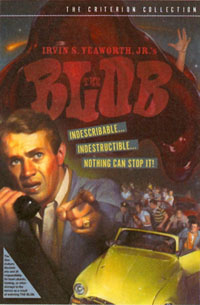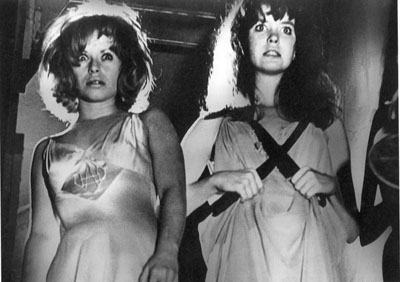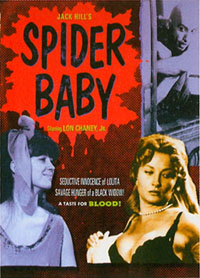“Now on the eighth day the blood-drinking wrathful deities will appear. Recognize them without being distracted. . . . Glorious Great Buddha-Heruka will emerge from within your own brain . . . with three heads, six arms, and four legs spread wide apart. . . . His nine eyes gaze into yours with a wrathful expression, his eyebrows are like flashes of lightning, his teeth gleam like copper. . . . His body is garlanded with black serpents and fresh skulls. . . .”
The Tibetan Book of the Dead abounds with such descriptions of startling visions that can appear in the bardo, the way station between death and rebirth. First-time readers are sometimes so shaken up by these images that they miss the point: as the text points out repeatedly, these “wrathful deities” have no intrinsic reality but are expressions of our own consciousness. It’s only a movie, man—a horror movie—projected by our minds, much as a movie is projected onto a screen. These deities are just an attempt by our mind to get our attention, and are not the kind of eternal, self-existent entities that the word “deities” might suggest.
Freud and Jung had plenty to say about the creatures of our dreams being unacknowledged material crawling out of the Black Lagoon of our minds, and these creatures have long been given form by the grade-B horror films that emerge from the cinematic ghetto across the tracks from “respectable” Hollywood. This was especially so in their heyday of the ’50s and early ’60s. Godzilla, the monster born of nuclear radiation, embodied our nuclear jitters.Attack of the 50 Foot Woman acted out the collective rage of repressed housewives five years before the appearance of Betty Friedan’s bombshell book, The Feminine Mystique. Invasion of the Body Snatchers dramatized the paranoia of the McCarthy era, even if right-wingers were convinced that the body snatchers represented the Commies and left-wingers thought they were the Commie hunters.

But some of the classic killer B’s have a dimension that transcends such specific, topical fears, addressing our deepest dread while pointing toward the even deeper truth that resolves it. The Blob, for instance, is an excruciatingly dumb film, shot in Phoenixville, Pennsylvania by a small production company that specialized in Sunday school films. But back in 1958, I was fascinated by its story of a meteorite that lands in an all-American town, hatching a meatball-sized gob of what initially looks like translucent Silly Putty but soon proves to be extremely hungry extraterrestrial protoplasm. Perhaps it helped that I was eight years old. I was haunted by the images of the ever-expanding Blob, seeping under doors, through gratings, and, most memorably, out through the two little square projection booth windows in the back of a movie theater. True, as the audience flees in supposed terror, several of the extras—Phoenixville locals—are visibly laughing. (Even on the DVD, the audio commentary treats us to the producer’s prolonged coughing fit, uncut; the low-budget, one-take B legacy lives!)
The Blob is horrifying precisely because it doesn’t spring, bite, snarl, claw, fire weapons, or engage in any other recognizable alien/monster/enemy/predator behavior. Instead, it oozes– placidly, indiscriminately absorbing people, dogs, anything that gets in its path, growing ever bigger as it digests its victims’ bodies, bones and all, and turning from its original colorlessness to a disquieting liver shade. When little Danny, firing his toy gun at the thing, runs out of bullets and throws his gun at it, it’s a movie-cliche gesture—glommed from a thousand old Westerns—of perfect futility.
Certainly this relentless absorption can be seen as a metaphor for the pressures of ’50s conformism, particularly since the heroes who go after the Blob are the local crazy, mixed-up teenagers, perpetually in trouble with the cops for such infractions as backward drag-racing. (Their leader is “Steven” McQueen, practicing hard at the mannerisms that will soon make him a star. At twenty-eight and with pouches under his eyes, he’s the world’s oldest teenager.) But maybe there’s something deeper going on as well, a fear of a more fundamental kind of absorption that we all intuit, if in a distorted form. That is, we intuit shunyata, the essential emptiness of all relative forms. As the Heart Sutra declares:
In emptiness there is no form, sensation, thought, impulse, consciousness.
No eye, ear, nose, tongue, body, mind.
No color, sound, smell, taste, touch, object of thought.
Sounds a lot like the Blob. And our fear of that colorless, soundless, smell-less emptiness drives us to work overtime to resist being sucked into it, through a process of nonstop distraction. Thus we compulsively generate activities and fantasies, anything to keep the mind busy, even when we know our busyness is pointless. Backward drag-racing indeed: as long as there’s plenty of sound and fury, we don’t care if it signifies nothing. Just don’t serve us nothing straight up.
The irony is that in fighting the Blob we’re fighting enlightenment—as we’ve misconceived it, that is. Actual enlightenment does not mean being absorbed into a Blob-like nothing of nirvana that annihilates the sights, sounds, and smells of everyday samsara. It means perceiving the nondual inseparability of nirvana and samsara, and thus the nonbinding nature of samsara’s boundaries. We can’t get sucked into the formless because we are the formless, even as we are form. If the Heart Sutra said only “Form is no other than emptiness,” we might be right to fear the Blob as a specter of the existentialists’ dizzying, nauseating Void, but the sutra follows with “Emptiness is no other than form.” All the waves of relative manifestation are no other than the absolute ocean of being, but ocean is also none other than waves.
Before enlightenment this paradox has no explanation; after enlightenment it needs no explanation. It’s logically impossible but experientially inexorable. As Nurse Kate—backed into a corner, vainly throwing acid at the Blob—screams, “Doctor, nothing can stop it!” In fact, at the film’s close the Blob is not killed but frozen and flown to the North Pole, where it’s immobilized “as long as the Arctic stays cold.” Similarly, try as we might, we cannot kill our true, nondual nature but only postpone its eventual realization. (The last frame of The Blobcarries the obligatory B-picture superimpose, “The End . . . ?”, conveniently leaving the door open for a sequel while sending a delicious thrill up my eight-year-old spine.)
THIS INEXORABLE NONDUALITY is addressed with considerably more wit in the 1964 cult classic Spider Baby (aka Cannibal Orgy, aka Attack of the Liver Eaters), the debut of writer/director Jack Hill, who later won notoriety with the blaxploitation classics Coffy andFoxy Brown. Shooting on a twelve-day schedule with $65,000 raised by a couple of real estate developers, Hill assembled a cut-rate cast of fine unknowns and has-beens, including Mantan Moreland, the “Feets get movin’!” chauffeur in some fifteen Charlie Chan mysteries, and the once and future Wolf Man, Lon Chaney, Jr.

Spider Baby uses many of the genre’s cliche’s, from the spooky-old-house-with-squeaky-gate setting to the inconclusive conclusion (yep: “The End . . . ?”), but there’s something strangely enticing about it. The theme is a medical condition called the Merrye Syndrome, whose victims gradually regress to a primordial state of infantile idiocy and homicidal savagery. The principal killers are two teenage sisters for whom murder is a sort of erotic “Itsy Bitsy Spider” game, cheerfully abetted by their Uncle Ralph, a mute, drooling, bullet-headed animaloid straight out of Freaks, played brilliantly by the character actor Sid Haig. Despite the film’s token efforts to horrify us, the Merrye Syndrome is irresistibly merry, as if Hill intuits that the true primordial state is in fact transcendental bliss.
As “normal” characters from the outside world venture into the Merrye family’s domain, they are destroyed. That makes sense. Contact with the primordial is destructive: it destroys the structures of non-truth and non-bliss on which we’ve built our lives and our purported selves. Thus the prim, scheming invader Aunt Emily spends one night in the house, literally lets her hair down, is transformed into a lusty vixen in Frederick’s of Hollywood garter belts, and is promptly devoured. Then there’s Schlocker, Emily’s swaggering, cigar-chomping, Hitler-mustached midget lawyer, the embodiment of smug intellect, with its presumptuous faith in its ability to understand and control the world. (Shades of bespectacled Doc in Disney’s Snow White, and fraudulent little Oz behind the curtain, a schlock God.) We know the film is working when we find ourselves rooting for the killers: Schlocker’s death is satisfying precisely because we’re so sick of being bossed by our midget intellects. Meanwhile, thanks to the fierce intelligence of Haig’s performance, freaky Uncle Ralph bores into the outsiders’ minds before tearing into their bodies, the disconcerting clarity of his eyes challenging their complacent, conventional perspectives.

The teenage sisters combine knowingness and delusion, child games and murder, sensuality and irony, fair hair and dark hair, to spin a veritable web of nonduality that ensnares all interlopers, including us viewers. But Bruno, the demented family’s gentle chauffeur, caretaker, and guru—played with great sensitivity by Chaney—has the film’s best nondual line: “Just because something’s not good doesn’t mean it’s bad.” With breathtaking simplicity, this suggests that all our mind-made categories (good and bad, self and other, subject and object) are ultimately empty. Such penetrating wisdom must be balanced by compassion, which Bruno does in his other pith instruction: “It’s not nice to hate.”
Spider Baby has no Steve McQueen to save us from the final orgy of destruction. But there is a survivor, an Uncle Peter (future soap opera star Quinn Redeker), who has a good-hearted, innocent, nonjudgmental openness toward the Merryes, even as the girls tie him up. By walking the nonconceptual middle path, he avoids dualism’s self-destructive extremes, including Schlocker’s rationalism and Emily’s alternating frigidity and sensuality, and thus survives the apocalypse, like Ishmael echoing the Book of Job in Moby Dick: “And I only am escaped alone to tell thee.” That is, he is us, if only we can learn our cinematic dharma lessons, recognize the projections of our own minds on the screen, and emerge with clearer awareness from the dark bardo of the movie house.
The End . . . ?
♦
The Blob
Irvin S. Yeaworth, Jr., Director
Paramount Pictures, 1958, $39.95 (DVD)
Spider Baby
Jack Hill, Director
American General Pictures, Inc., 1964 $14.99 (DVD)
Thank you for subscribing to Tricycle! As a nonprofit, we depend on readers like you to keep Buddhist teachings and practices widely available.